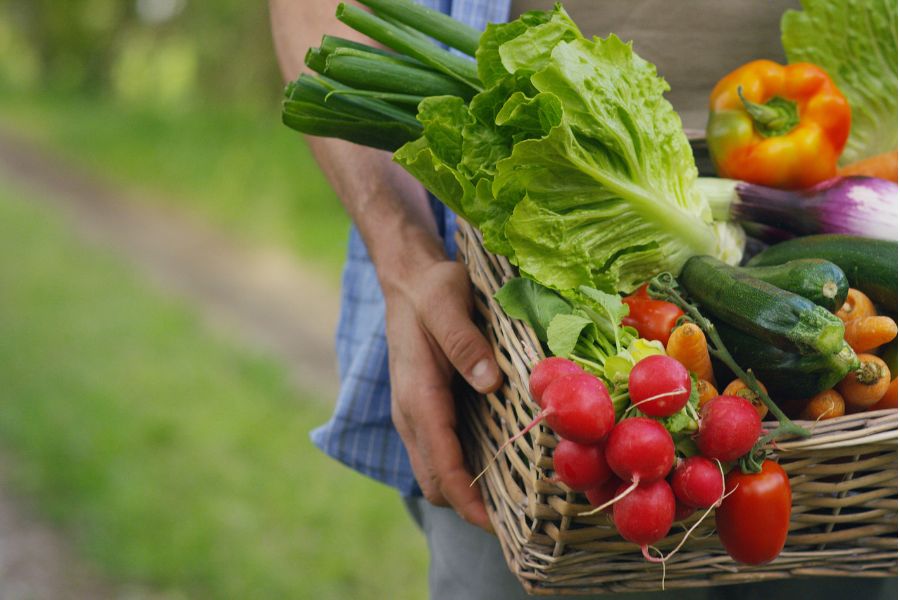Cluster farming, and the case of ‘sweet grapes’
Sayhadri Farms is one of the five private entities recently selected by the Government of India to undertake cluster farming of specific horticultural crops. Azhar Tambuwala, Director, Sahyadri Farms details the inspiring journey of how Sahyadri’s FPO model successfully ensured the cultivation of new and improved grape varieties in India for the domestic and international markets.
With the recent initiative by the government to support cluster farming, he is confident that more companies can now emulate the model and bring about a critical revolution in Indian agriculture.

As an FPO (Farmer Production Organization), Sahyadri Farms focuses on collective farming to make an impact at the ground level, and we have achieved a great deal of success. We are now tremendously enthused, as the government has observed and recognized the impact of our efforts over the years. It has taken a very important initiative to allow five private firms to undertake cluster farming on about 50,000 hectares on a pilot basis with an investment of Rs 750 crore, including government subsidy.
What is cluster farming essentially? How can it boost India’s agri production, bring new varieties and enhance exports? I will attempt to answer some of these questions through our own experience with this model.
A journey of transformation
Whilst Sahyadri Farms was set up in 2011, we have been involved in the grapes industry for a long time before that. In fact, I am personally involved in the grapes business since 1995. Today, we are India’s largest grape exporters and ship to nearly 40 countries. Once upon a time, grapes were 100% of our turnover. Today, this is 28%, but still remains the largest, the core and a very important part of our business. Around 90% of our shareholders are grape growers.
In the case of grapes, we realized a critical challenge – 90% of our produce belongs to the Thompson variety. This is a very old & traditional variety, in which farmers face certain challenges. Moreover, India does not have any good black variety and very little production of the red variety of grapes. Our country has 90% white (green) grapes, 7-8% black and 2-3% red.
“Overseas consumers have started getting used to eating better grapes and India has yet been unable to offer them, thereby losing market acceptability as well as competitiveness.”
Although India is among the largest growers of grapes in the world, only a few of our varieties are successful. And even these are facing challenges – where they are not rain or pest resistant; they don’t have a good enough yield; their shelf life is low and they face difficulty in transit. Moreover, the quality, flavour and taste of the product is average.
Apart from enduring issues pertaining to climate change, varieties like Thompson are labour-intensive and also need a lot of growth hormones, making them expensive to grow. However, new varieties have a better yield and a naturally good size and don’t need these growth hormones. Their tastes and flavours are very international in appeal too. Overseas consumers have started getting used to eating better grapes and India has yet been unable to offer them, thereby losing market acceptability as well as competitiveness.
Through our efforts over the years, Sahyadri Farms has got an exclusive license for the ARRA varieties in India. These grapes are known for their extraordinary flavour, taste and sweetness. They have a special aroma, intense colour, uniform large berries and optimum productivity. We have been undertaking trials for these new varieties and production is only increasing.
Following our foray into new world grape varieties and the strength Sahyadri Farms can offer regarding scaling up and protection of rights, we have now also taken licences for the SNFL & ITUM varieties, which are under trials now.
Farmers can see value in shifting from traditional varieties to some new varieties. They are also seeing how we have undertaken multiple trials, have had multiple Field Days and first experimented on our farms. We have invited scientists and agronomists from across the world to come and help us grow the varieties in Indian conditions. Developing a protocol and understanding how the product can be cultivated in Indian conditions has been quite a journey of effort.
How cluster farming can proceed forward
While we have undertaken collective farming independently, other FPOs who have now received grants in crops like bananas or apples will be able to take similar decisions – bringing in new varieties and taking on the costs and risks of experimentation. The entire process is highly investment intensive with costs related to the product, plantation, licensing fees, plantation fees and waiting costs. We have to keep the product in quarantine for a year and handle it carefully. After that, we plant it in the ground and then scale it up.
With the efforts of the last 5-7 years, we have come to a successful point on our own. Last year, we shipped around 25 containers of new varieties for the first time from India. This year, we were able to export about 100 containers of the new varieties, and also offer an equivalent volume in the Indian market. We are trying to increase its production in the next two years, to have at least 2,000 hectares of area under production. Honestly, I think we are on the brink of something huge here, because India has got 165,000 hectares of grape plantation and we are only just starting. This revolution will affect the entire industry.
For many years, international breeders would fear coming to India due to concerns about how their rights will be protected. When we brought in the ARRA variety, other breeders woke up to the fact that India is opening up and there is a potential to have their varieties in India. We are expecting that all the best varieties of the world will come to India. The future for the Indian grape grower looks very bright because he now has the option of growing multiple global varieties in India.
“Honestly, I think we are on the brink of something huge here, because India has got 165,000 hectares of grape plantation and we are only just starting. This revolution will affect the entire industry.”
Today we have got government support, which will give us some momentum. This will help us subsidise some fees, licenses, plant costs and plantation costs for bringing in new varieties. With the partnership model that we have created, we will pass on the cost benefits to the farmers.
If other producers are able to understand and emulate this and benefit from the grant being provided by the government, it will help them bring in a lot of new varieties of apples, bananas, etc. We should understand that our small farmers in India don’t have the abilities individually – whether it be financial or economic or experimentation in growing new varieties. When they don’t have this base and knowledge, if one were to simply bring a variety and give it to a farmer and ask him to grow it; he would never be successful.
Hence, at Sahyadri, we have this constant exchange of information with all our growers – invitation to Field Days, taking them overseas, inviting scientists & agronomists from across the world, collating data, managing, and investing in the costs, experimenting with different ways – and as all these things are being done, an India protocol is developed for each variety. This builds confidence and growers are willing to take it forward.
The next most important factor is taking it to the market. Simultaneously whilst efforts in growing are being taken, we were also talking to all buyers in the world, taking feedback from them and getting them warmed up to the idea of the next best thing out of India. This season we have sent a few pallets of each variety to all buyers and the response has been very encouraging and valuable.
Thankfully, I believe that going forward, the industry will not have to face the kind of hardships and struggles that we went through. The process will probably be a lot more simplified and better understood by the breeders, the government and the growers. Consequently, we can look forward to a massive disruption in India’s agricultural landscape that will also provide a major boost to our agri exports in the coming years.

Azhar Tambuwala is the Director of Marketing at Sahyadri Farms, Maharashtra. Encompassing a pool of as many as more than 8,000 marginal farmers of the country, this is a cooperative of the farmers, by the farmers and for the farmers. The views expressed here are his own.













Leave a comment